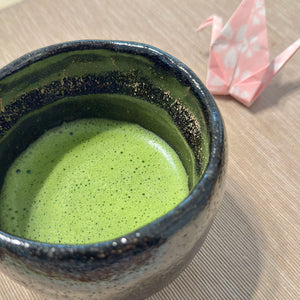
Matcha Sae 100g
Tax included
Shipping calculated at checkout
In stock
Pickup currently unavailable
Sakamoto “Sae” Matcha — Shibushi, Kagoshima • soft, sweet, latte-friendly
Stone-ground matcha from Master Sae Sakamoto's organic, shade-grown teas, showcasing the silky sweetness of the Saemidori tea plant variety. The palate is creamy with sea-green umami, subdued tartness and a subtle "creaminess" — a distinctly latte-friendly profile.
Origin & processing
- Region: Shibushi, Kagoshima (Kyūshū) — Sakamoto Tea Garden, organic cultivation.
- Raw material: Saemidori (some items are a blend of Saemidori + Okumidori ).
- Shading: long, in several stages — high amino acid content, dense umami.
- Grinding: traditional granite stone mill ( tencha → matcha ).
Flavor profile
- Aroma: sweet “wagashi”-like notes, fresh green, white almonds.
- Taste: soft, creamy and sweet; delicate umami, minimal bitterness.
- Finish: clean, cool, long sweet echo.
Recommended preparation
Usucha (ordinary cup)
- 2 g matcha (≈1 heaped teaspoon) + 60–70 ml, 75–80 °C water
- Sieve it, then foam it with a chasen using “M” or “W” movements for 15–20 seconds.
Koicha (thick, “dessert-texture”)
- 4 g matcha + 30–35 ml, 60–65 °C water
- Instead of foaming, knead slowly until smooth; intensely umami, thick.
Matcha latte (Sae's strength)
- 2–2.5 g matcha + 40 ml 80 °C water — blended until smooth
- + 180–200 ml warmed milk/oat drink
- It's round even without sweetener; the sweetness of the Sae comes through nicely.
Pairing & occasion
- For matcha cakes, fruity desserts; for a morning latte.
- If you're looking for a creamy, sweet, easy-to-love matcha.
Note: The “Sae” designation refers to Master Sakamoto’s Saemidori-centric profile; some customer and dealer descriptions highlight 100% Saemidori, while others also indicate Okumidori contributions. Lot-specific information is on product packaging.
How does it fit into the Sakamoto matchas?
| Item | Style/usage | Typical profile |
|---|---|---|
| Sae Matcha | Everyday cup, especially latte | Softly sweet, creamy; restrained tartness |
| Kiwami Matcha | Ceremonial (usucha/koicha) | Refined, round umami; “grand ceremonial” feel |
| Zen Matcha | Ceremonial (top category) | Extremely clean, dense umami; “imperial” position |
Positioning: Several European retailers are listing Zen matcha as the top of the range (“imperial”), while Kiwami is positioned as a high-end, ceremonial item. Sae is also excellent as a latte-friendly option with the sweetness of Saemidori.
Sae – sweet, creamy, latte-friendly (everyday).
Kiwami – balanced, ceremonial (usucha/koicha).
Zen – top category, single-cultivar Seimei, deep umami, for special occasions.
Organic vs. non-organic matcha – what's the difference in taste?
Matcha's silky umami is provided by free amino acids (mainly L-theanine ), while catechins are responsible for the fresh green astringency. The difference is determined by long shade and nitrogen supply .
- Organic, with good shading: sweet, umami, clean – it competes .
- Organic, with weaker nutrients: greener, leaner, slightly more tart.
- Non-organic (average): fuller umami, creamier sweetness.
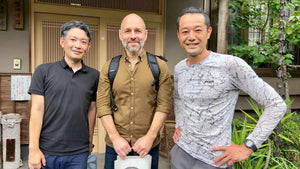
Personal contact
Our teas don't come from wholesale warehouses or unknown sources. We travel to the small producers we source from – whether it's a Japanese family tea garden, a Chinese mountain village or an oolong maker in Taiwan.
Stories
We meet them in person, learn their story, see how they care for their plants, and how they process the fresh leaves.
These experiences are the soul of our teas. This way, not only is the quality guaranteed, but also the fact that behind each cup there is a real person, a real story.
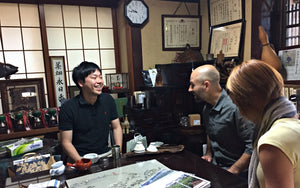
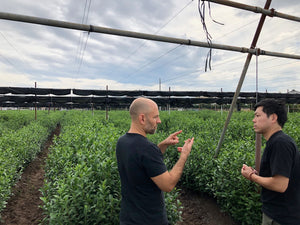
Direct
This direct relationship is valuable to us. Not only because of the excellent tea, but because we believe that trust, respect and personal presence are what make the tea drinking experience truly special.
Teavolution Tea Blog
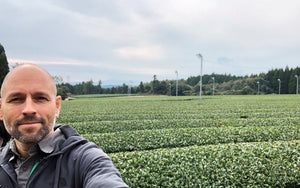
Oct 2, 2025
Sencha tea
Read more

Sep 21, 2025
Matcha hiány Japánban
Read more
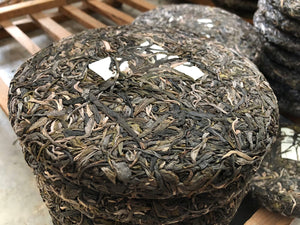
Mar 18, 2025
Puer tea, puerh or pu-erh
Read more
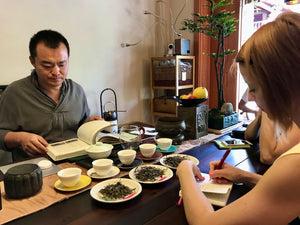
Mar 18, 2025
Types of tea
Read more
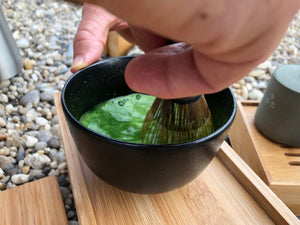
Mar 18, 2025
What is matcha tea?
Read more

Mar 18, 2025
Oolong tea (Wulong tea)
Read more



